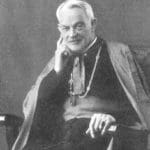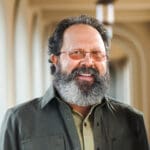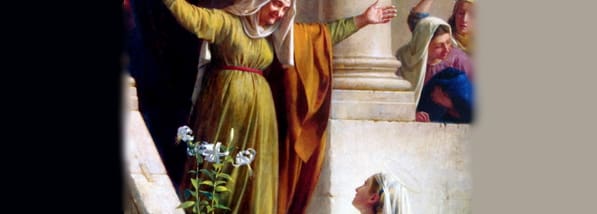THE VISITATION
“And Mary, rising up in those days, went into the hill country with haste into a city of Judah. And she entered into the house of Zachary, and saluted Elizabeth. And it came to pass that when Elizabeth heard the salutation of Mary the infant leaped in her womb. And Elizabeth was filled with the Holy Ghost, and she cried out with a loud voice and said, Blessed art thou among women, and blessed is the fruit of thy womb. And whence is this to me, that the mother of my Lord should come to me? For behold as soon as the voice of thy salutation sounded in my ears, the infant in my womb leaped for joy. And blessed art thou that hast believed, because those things shall be accomplished that were spoken to thee by the Lord.”
Luke 1:39-45
 1. When Elizabeth knew of the grace of motherhood that had been conferred on her, we are told that she “hid herself five months, saying, Thus hath the Lord dealt with me in the days wherein He hath had regard to take away my reproach among men.” When Mary knew of the same grace conferred on her “she, rising up, went into the hill country with haste into a city of Judah,” and there saluted Elizabeth. The spontaneous actions are significant. Elizabeth is the hermit, and cherishes the gifts of God in the contemplative life; Mary is the more active, and is prompted by the gifts of God to go and share all she has with others. Still, that she loves the contemplative soul is proved by the fact that to it she goes by “preference, to it she goes with haste,” upon it she bestows the greatest blessing.
1. When Elizabeth knew of the grace of motherhood that had been conferred on her, we are told that she “hid herself five months, saying, Thus hath the Lord dealt with me in the days wherein He hath had regard to take away my reproach among men.” When Mary knew of the same grace conferred on her “she, rising up, went into the hill country with haste into a city of Judah,” and there saluted Elizabeth. The spontaneous actions are significant. Elizabeth is the hermit, and cherishes the gifts of God in the contemplative life; Mary is the more active, and is prompted by the gifts of God to go and share all she has with others. Still, that she loves the contemplative soul is proved by the fact that to it she goes by “preference, to it she goes with haste,” upon it she bestows the greatest blessing.
2. The fruit of the contemplative is John the Baptist; the greatest among the sons of men, “a prophet and more than a prophet, who “shall convert many of the children of Israel to the Lord their God.” And so indeed it is in all time. The making of an apostle is not in the lecture-room and the public place; there he learns only the use of his weapons; they are his gymnasium. But it is in secret, in that part of his soul which answers most to the life contemplative. The true apostle is the nearest akin to the recluse. And conversely, as is seen in Our Lady, the first work of the apostolate is charity; its first, indeed its only work.
3. The double blessing which Elizabeth has for Mary must be noted. She repeats the blessing of the Angel; the meaning of the repetition has given room for criticism among commentators. But is it to be wondered at that the same line of thought should give rise to the same conclusion? Especially as the conclusion is so exactly fitting that it is repeated again almost immediately after by Our Lady herself, and has been spontaneously repeated ever since by all the faithful! Then she adds the further blessing: “Blessed art thou that hast believed.” As if she would anticipate an answer to that question of our Lord Himself, “Who is My mother, and who are My brethren?” He answered: “Whosoever shall do the will of My Father Who is in heaven, he is My brother, and sister, and mother.” And she answers: “She who said, ‘Be it done to me according to Thy word,’ she, on your own showing, is indeed your Mother.”
Summary Meditation Points:
1. In Elizabeth and in Our Lady we have types of the contemplative and apostolic natures, even as seen in active life.
2. From the contemplative comes the apostle, and back to the contemplative goes the apostle, in charity.
3. The contemplative blesses the active with a double blessing.
 Editor’s Note: This meditation is from Archbishop Alban Goodier’s “The Prince of Peace” (1913).
Editor’s Note: This meditation is from Archbishop Alban Goodier’s “The Prince of Peace” (1913).
Art for this post on The Visitation: The Visitation (Mary Visits Elizabeth), Carl Heinrich Bloch (1834-1890), date unknown, Restored Traditions, used with permission. Mirror of Archbishop Alban Goodier, S.J., www.stmaryscadoganstreet.co.uk, all rights reserved, used with permission.




